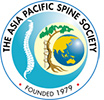The human hand is an intricate instrument that is both tough and delicate. Its functions of sensations and motion allow us to experience and control the world around us.
One in three industrial or home accidents involves injury to the hand.
Many routine hand conditions are treated in our practice. The following links provide a brief description of some of them.
Dr Suresh Siva offers surgery for numerous common hand conditions
Trigger Finger
The tendons of the thumb and each of the fingers pass through a sheath on the palm side of the hand. Certain diseases and overuse activities can cause a thickening of this sheath. As the tendon passes through a thickened sheath, the tendon eventually becomes irritated and swells. Pain, catching and eventually locking of the finger will occur. Early treatment consists of anti-inflammatory medication or Cortisone injection. If these fail to provide relief, the sheath is opened surgically through a small incision at the base of the finger.
Dupuytren’s Contracture
This disorder is a thickening of a ligament in the palm, resulting in nodules on the ligament which, if severe enough, can cause an inability to fully straighten the fingers. The ring and small fingers are the fingers most commonly involved.
The cause of this disorder is unknown. It is seen more commonly in men and is usually found in individuals of northern European extraction.
If deformity is mild and there is no functional loss, no surgery is needed. If, however, there is significant contracture that interferes with full use of the hand, surgical removal of a portion of the ligament is the treatment of choice to improve function and to prevent further deformity.
De Quervain’s Tenosynovitis
Tendonitis on the thumb side of the wrist can be a very painful and disabling condition. Simple pinching and twisting activities can be almost impossible. The tendons to the thumb become inflamed as they pass under a ligament and the slightest motion of the wrist can cause pain.
Treatment consists of rest, medication and occasionally the use of a steroid injection. If these treatments do not provide relief over time, the tendons can be surgically released.
Carpal Tunnel Syndrome
Carpal tunnel syndrome is a common hand problem resulting from pressure on the median nerve at the wrist. Symptoms, which are often worse at night, consist of numbness and/or pain in the wrist and fingers. Eventually there is loss of strength, fine motor control and sensation.
Early treatment consists of splinting and anti-inflammatory medication. If symptoms do not improve, a day surgery procedure to relieve the pressure on the nerve is suggested. Dr Suresh uses a small incision technique which has fewer risks than the endoscopic (keyhole) techniques.
There is also a possibility to have office Carpal Tunnel Release using the MANOS or CODA CTR procedure. Click the links below to find out more about the procedure:
https://www.youtube.com/watch?v=QzJRcSs_yNo
https://www.codactr.com/patient-benefits
Following surgery, early gentle use is encouraged. The hand is kept dry for the first 3 days. On day 4 after surgery, the hand can be wet in the shower and a small dressing can then be applied. Sutures are removed at 7 to 10 days. People commonly have both hands released at the same time and cope well with self-care.
Click on the topics below to find out more from the Orthopaedic connection website of American Academy of Orthopaedic Surgeons.















